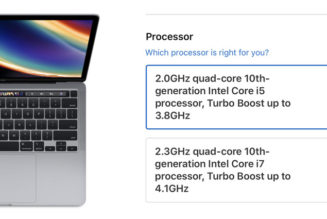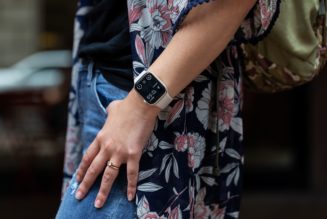Sanding down those rough edges doesn’t come cheap.
Drop has become a popular retailer of keyboard components like keycaps, but it also has a lineup of fully assembled models for anyone who wants something that’ll just work out of the box. These include the $99 ENTR, $200 CTRL, and $250 SHIFT. Its latest model, the Sense75, is a little different.
With its gasket-mount design, thick double-shot DCX keycaps, and compatibility with the VIA keymapping software, the Sense75 hits all the latest buzzwords to be a premium keyboard for discerning enthusiasts. And its starting price — $349 for the fully assembled version in black — leaves little doubt about the kind of customer that Drop is targeting here.
That’s a lot to spend on a keyboard, and it gives you the right to scrutinize every last detail of the Sense75. But it’s scrutiny that the keyboard is never quite able to withstand.
HOW WE RATE AND REVIEW PRODUCTS
With its subdued colors, the Sense75 could almost pass for an office keyboard when you disable its RGB, but that’s only really half true. After all, the Sense75 offers a familiar combination of current mechanical keyboard design trends, including a 75 percent layout, gasket-mount design, and of course, the increasingly standard issue volume knob. Feature parity is no bad thing, but it also means Drop has its work cut out if it wants to distinguish itself from competing keyboards like the GMMK Pro and Keychron Q1.
I’ve been using the fully assembled black model of the Sense75, which Drop sells for $349, but there are a couple of different versions available. The keyboard’s fully assembled white variant sells for $399, and it’s also available as a bare-bones model without switches or keycaps for $249 in black or $299 in white.
That’s expensive, considering that the Keychron Q1 has an identical layout and nearly identical features — including a gasket mounting system, RGB lighting, and hot-swap sockets — but costs just shy of $180 with keycaps and switches (it’s our current recommendation for the best premium keyboard). There’s an argument that Drop’s keyboard includes as standard the kinds of premium aftermarket components that you might use to upgrade Keychron’s keyboard, though admittedly only if you want the specific components that Drop is offering.
:format(webp)/cdn.vox-cdn.com/uploads/chorus_asset/file/24352219/226481_Sense75_Keyboard_JPorter_0012.jpg)
:format(webp)/cdn.vox-cdn.com/uploads/chorus_asset/file/24352214/226481_Sense75_Keyboard_JPorter_0007.jpg)
Visually, the Sense75 compares well to the Keychron Q1. Its appearance is crisp and well-considered, and like the Keychron, there’s no distracting branding on the top of the keyboard. Around the volume dial, there’s no awkward square like you see on most of Keychron’s Q-series boards. At a little over 3.1 pounds (1.42kg), the keyboard feels weighty and solid, and I struggle to point out a single rough edge. I’m a big fan of this clean look.
This understated design extends to the Sense75’s RGB lighting. Most mechanical keyboards offer some kind of RGB lighting at this point, which normally shines upwards around (and often through) their keycaps. But while the Sense75 has both per-key RGB lighting as well as an external light strip, its keycaps are entirely opaque, and its external lighting points downwards, meaning that you can’t see evidence of either when they’re turned off. Great news for RGB haters.
As standard, the keyboard comes with a set of Drop’s DCX keycaps, which retail for $99 as a standalone set. I wrote about Drop’s keycap design last year, but the short version is that they represent the company’s attempt to compete with GMK, which produces what many enthusiasts believe to be the gold standard of aftermarket keycaps. That means Drop’s keycaps use thick, high-quality ABS plastic and a double-shot construction with fantastically crisp lettering. The keen-eyed will spot small inconsistencies (my editor Nathan Edwards immediately clocked that the lettering on the left Shift key almost reads “Shif t”), but they’re far better than Keychron’s stock keycaps and are among the best you’ll find on an off-the-shelf keyboard.
:format(webp)/cdn.vox-cdn.com/uploads/chorus_asset/file/24352212/226481_Sense75_Keyboard_JPorter_0005.jpg)
While Keychron’s boards (even its affordable sub-$100 K-series models) come with both Mac and Windows keycaps in the box, the Sense75 ships with just Windows keycaps. If you’d like the keyboard to have Command and Option keys rather than Alt and “Super” (Drop’s version of the Windows key), you can spend an additional $25 for the Mac keycaps addon. The process of actually flipping the keyboard between its Windows and Mac compatibility modes is handled with a keyboard shortcut rather than the simple hardware toggle Keychron uses. But unless you need to switch between the two operating systems on a regular basis, it’s a fiddle you’ll rarely encounter.
A big advantage the more affordable fully assembled Keychron Q1 has over the Sense75 is that it’s available with three different switch types. The Sense75 has just one switch option: Drop’s Holy Panda X switches. There’s no option for linear or clicky red or blue switches or less tactile browns. Arguably that’s the point of the Sense75’s barebones version. But if you were to buy the barebones version of the keyboard in black ($249) plus a set of white-on-black DCX keycaps ($99), you’d be spending the same amount as the fully assembled model with no cash left over for switches. It doesn’t look like a great deal.
Meanwhile, if you were to buy the barebones version of the Keychron Q1 and then add the same Holy Panda X switches and Drop DCX keycaps included as standard with the Sense75, you’d be looking at around $365: $161 for the keyboard, $99 for the keycaps, and $105 for the switches. (That last number is a bit misleading, though: Drop is the only vendor for Holy Panda X switches, which it sells for $1 each and only in packs of 35, which means you have to buy three packs to cover a 75 percent board. This is almost comically user-hostile, but there are plenty of nice switches out there for much less money.) This setup gets you a very similar keyboard for not that much more money, plus a complete set of switches and keycaps that could always be repurposed for a future board.
:format(webp)/cdn.vox-cdn.com/uploads/chorus_asset/file/24352218/226481_Sense75_Keyboard_JPorter_0011.jpg)
:format(webp)/cdn.vox-cdn.com/uploads/chorus_asset/file/24352216/226481_Sense75_Keyboard_JPorter_0009.jpg)
In fairness to Drop, if you had to choose just one set of switches to ship with a keyboard, you could do a lot worse than the Holy Panda X, and their larger tactile bump feels great here. There’s a thunk to them that you don’t get with brown or linear switches, and combined with the aluminum case and plate, the keyboard feels chunky and solid to type on without any of the high-pitched pinging sounds you can sometimes get from metal cases, thanks to gratuitous use of dampening foam.
And yet, side by side with a Keychron keyboard, I far prefer the Keychron Q1. Although both are gasket-mounted, meaning their switch plates are suspended between strips of squishy foam to give it a little bit of give and bounce as you type, Drop’s keyboard doesn’t have nearly the same amount of flex. It gives the Sense75 a stiffer feel compared to the Keychron that doesn’t exactly scream “gasket mount.”
Drop’s PCB-mounted stabilizers (the mechanism that sits under long keys to stop them rattling) are also far more rattly than Keychron’s out of the box. While the space bar on the Q1 has a nice pop sound to it, the Sense75 rattles in a way that doesn’t exactly scream “$349 keyboard.” Overall, it means the typing experience only ever ends up feeling “okay” rather than “great,” and I prefer the feel of Keychron’s sub-$200 Q1.
:format(webp)/cdn.vox-cdn.com/uploads/chorus_asset/file/24352211/226481_Sense75_Keyboard_JPorter_0004.jpg)
As well as a lack of switch choices, there’s also no option to get the keyboard with a European ISO layout. This is an ANSI- (read: US-) only board. The Sense75’s switches are south-facing for better compatibility with aftermarket keycaps, and the PCB’s sockets are 5-pin for maximum compatibility. Opening up the keyboard is relatively easy, with just six screws on the underside of the case to unscrew.
The Sense75 also supports remapping, but it’s a bit of a weird thing to get set up. The good news is that you can use the excellent VIA software to remap the keyboard’s keys, set up macros, and adjust the keyboard’s lighting. The bad news is that you’ll need to flash special VIA-enabled firmware onto the keyboard before it’ll support the VIA app. That’s because the keyboard’s stock firmware is designed for use with Drop’s own configurator tool, which isn’t currently compatible with the Sense75. Support is due to go live next month, but I wasn’t able to test the functionality as part of my review.
A final note on accessories: In the Sense75’s box, you get a keycap puller, switch puller, and USB-C cable alongside the keyboard. The pullers are nice. The switch puller has a far larger grip than Keychron’s, which should make it easier on the hands if you ever want to remove the Sense75’s dozens of switches. But the keyboard’s detachable USB-C cable is a bizarrely short 100cm (around 40in) in length, and I had to use an extension cable to get it to look tidy with my desk setup. For comparison, the cable included with my Keychron Q2 was a much more comfortable 180cm (around 70in) in length.
:format(webp)/cdn.vox-cdn.com/uploads/chorus_asset/file/24352217/226481_Sense75_Keyboard_JPorter_0010.jpg)
:format(webp)/cdn.vox-cdn.com/uploads/chorus_asset/file/24352210/226481_Sense75_Keyboard_JPorter_0003.jpg)
The Drop Sense75 sits in a bit of an awkward part of the mechanical keyboard market. It’s not that it’s the most expensive keyboard ever sold. But with a starting price of $349, it’s mainly competing against DIY models that you assemble yourself at home, where there’s an expectation that most people will do a certain amount of tinkering and modding to get the exact sound and feel they want.
Meanwhile, Keychron’s Q1 offers very similar specs to the Sense75 for under $200, and I think it’s a nicer typing experience to book. Admittedly the Q1’s stock keycaps are nowhere near as nice as the Sense75’s, but with the money saved, you could buy a set of Drop DCX keycaps — or GMK or MT3 or really any aftermarket keycap set — and still have money left over. Or if you’re prepared to sacrifice build quality but still want VIA programmability, you can spend under $100 on Keychron’s V1 (our current pick for the best keyboard available for most people). Or you could get a wireless keyboard from Epomaker or Ajazz for under $200.
With its fantastically clean design, high-quality stock keycaps, and tasteful underglow RGB lighting, the Sense75 looks every bit as nice as its price point suggests it should. But a combination of rattly stabilizers and stiff gasket means it never quite ends up feeling it, and hobbyists will likely still have some tinkering to do to get the exact feel they want. The Sense75 works out of the box, but I wouldn’t say it feels or behaves like a $350 keyboard out of the box.
Photography by Jon Porter / The Verge










wazup
I appreciate the focus on customer satisfaction in this post.
wazup
The advice in this post is practical and can be implemented immediately.
wazup
This post is a great reminder of the importance of innovation.
wazup
The insights in this post are applicable to any business size.
wazup
The information shared in this post is relevant to both established and startup companies.
wazup
I found the advice in this post to be very useful.
wazup
This post is a great resource for business owners looking to expand.
wazup
The tips and strategies shared in this post can be adapted to any business model.
wazup
The insights in this post are relevant to both B2B and B2C companies.
wazup
I found the case studies in this post to be enlightening.
wazup
This post is a great reminder of the importance of customer service.
wazup
The strategies shared in this post can be used to improve any business.